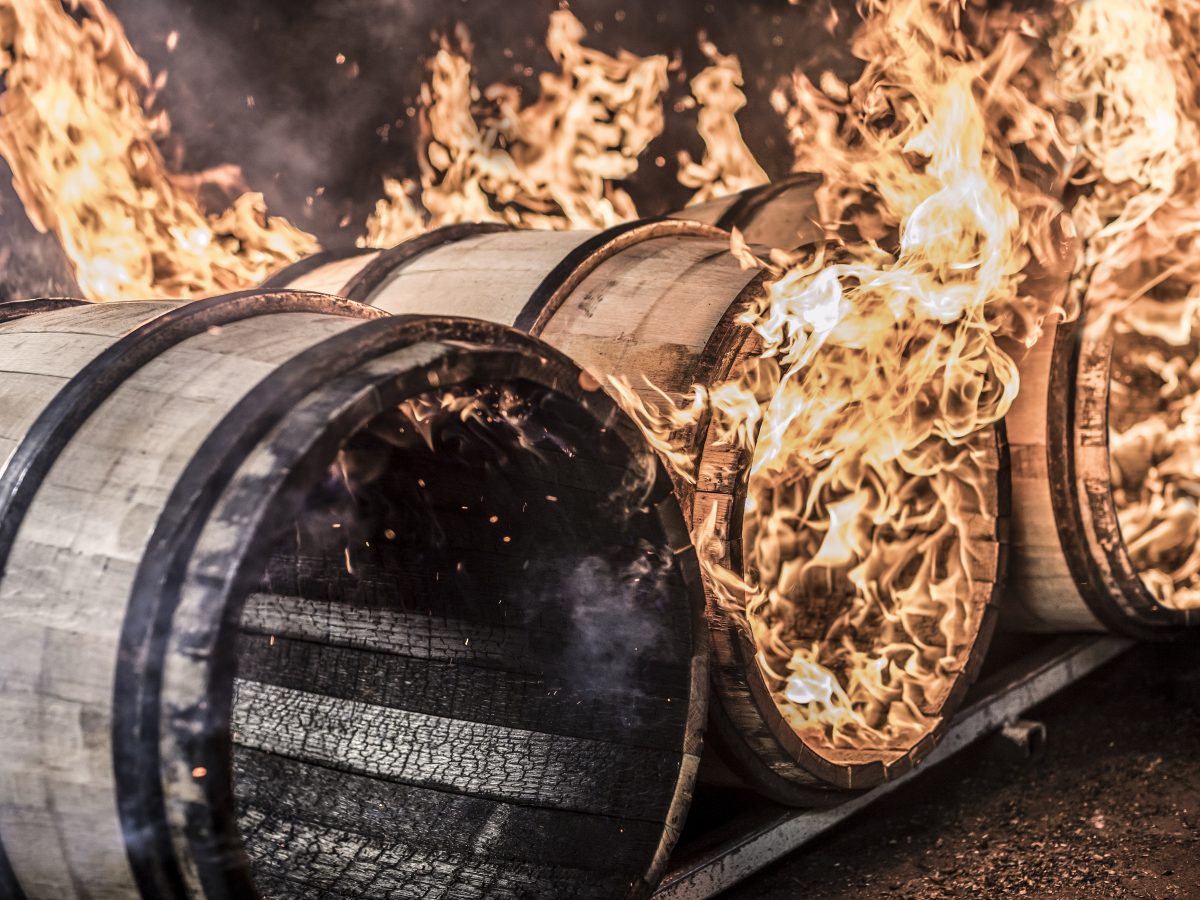The Art of the Bourbon Barrel’s Char

Bourbon’s Secret Ingredient? Barrels
March 28, 2019
Blood Oath Pact No. 5 Has Arrived
April 29, 2019The Art of the Bourbon Barrel’s Char

By regulation, all bourbon must be aged in new charred oak barrels. Why? Because unlike other whiskies, no additives (other than water) are allowed in bourbon. No added color. No added flavors. So, other than the distillate itself, bourbon picks up a lot of its character from the barrels. And the character of the barrels depends in large part on the level of char.
To learn more about the process, we chatted with Jeff LaHue, head of strategic partnerships at Independent Stave Company (ISC), which supplies and chars barrels for Lux Row Distillers.
Fire in the Hole
The largest spirit barrel manufacturer in the world, ISC has two cooperages, in Kentucky and Missouri — both in towns named Lebanon, interestingly enough. Though the method of feeding the barrels into the char line differs slightly in each location (the barrels are horizontal in Kentucky, vertical in Missouri), the automated process is otherwise the same.
Although it’s a fairly simple process, it’s wildly dramatic — sort of a fast ride in a short machine.
“Once a barrel is fed into the line, it is blasted with a propane flame,” LaHue says. “As soon as the barrel interior ignites, the propane is extinguished. The barrel burns vigorously at 500 to 600 degrees for a specified time, depending upon the level of char desired. Then it is snuffed out and sprayed with water — all in about 30 to 60 seconds.”
About that Level
The varied burn times are not haphazard. They are carefully calibrated to achieve particular penetration levels of char, usually referred to as Char No. 1 through Char No. 4. The latter is sometimes referred to as Alligator Char, due to the fissured look of the interior charcoal.
In the Red
After cooling for 24 to 48 hours, charred barrels are ready to go through quality-control checks, loaded onto trucks, and sent to producers. Bourbon is most often aged in barrels at Char Nos. 3 or 4. Once the barrels are filled with new distillates, the fun really begins.
“Behind the char layer in the wood is what we call the red layer — that’s where all the color, flavor, and aroma characteristics of the wood are,” says LaHue. “So, if you put more heat to the barrel, you’re going to have a thicker red layer and hence more extractables, the wood sugars that can be converted into typical bourbon characteristics: spice, caramel, and vanilla flavors.”
At the same time, the caramelization will start adding color to the maturing spirit.
Essentially, charring turns a barrel into a complete, albeit quiet, machine that attends to filtration, color, and sensory production. All it requires is time to develop the full and beguiling potential of what is released in that initial short burst of fire.

